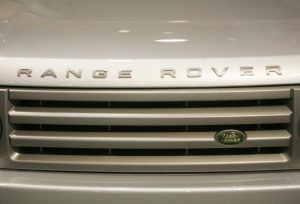
(Photo by ROBERTO SCHMIDT/AFP/Getty Images)
Another holiday approaches, bringing with it the typical pre-holiday apocalyptic traffic report. The one where the newscaster intones how the roads will be swarmed with vehicles heading off for holiday fun, while hinting that only some of those revelers will actually reach their destination. The rest? Stuck in traffic until it is time to head back to work. While traffic is no fun, it is also more true than ever that today’s cars are in effect rolling computers, full of technology trying to make the driver or passenger experience more enjoyable. Luxury cars and SUVs in particular are stuffed with all manner of driving or leisure aids, from navigation systems that show real-time traffic and require a PhD to operate, to all manner of gizmos designed to keep your phone charged and able to entertain you on the road. Some cars even handle the driving themselves for the most part, even as news of the occasional horrible accident keeps us fearing the days of fully automated automotive transportation.
The software and hardware that makes this all possible was invented or coded by someone of course. And because the automotive industry is a supremely competitive one, it is no surprise that auto companies and their suppliers continue to turn to obtaining patents to help protect their innovations — even if those innovations seem to add more complexity to the car than they are worth. Either way, we know that once companies have patents, they are often willing to assert them against competitors. Perhaps more so than usual in the rarefied world of premium car brands, where creating and maintaining the perception that a brand is symbolic of luxury and innovation is paramount.
In a column from just about a year ago, I wrote about one such case, while noting that we could potentially see an uptick in patent infringement lawsuits between competing car makers. Whether or not that soft prediction comes to fruition remains unclear. It is still interesting, however, to check in on how that case — where Jaguar Land Rover (maker of Range Rovers) sued Bentley over adaptive terrain response selection systems — has developed over the past year. As I noted in my prior column, the case was filed in the rocket docket of the Eastern District of Virginia, where the trial date for a case is typically set around the first anniversary of its filing.
Here, the case did not progress quite that far. But there was still a recently released substantive decision worth parsing. There, Chief Judge Mark Davis denied Bentley’s motion to dismiss (brought on 101 or Alice grounds) Jaguar’s amended complaint. As an initial matter, it should no longer be surprising to any reader that because of the nature (software-based) of the patented technology a motion to dismiss under Alice was filed. Here, the terrain response feature allows drivers to select how the vehicle will respond to different driving conditions, such as driving on sand or other off-road conditions. We can set aside for now how often the purchaser of a $100k+ SUV will decide to take it for a spin in the Sahara. The point is that the functionality exists and is the subject of a patent suit. Moreover, Bentley’s chosen response confirms yet again that Alice motions persist as a first-line defense in a wide range of patent disputes.
So how did the court deal with Bentley’s motion? In a pretty straightforward matter, actually, via application of Alice’s now familiar two-part test. In part one, the erstwhile search for a nebulous “abstract idea,” the court’s analysis centered on finding analogous technology in the automotive sphere. To that end, the court determined that the closest analogy was to cruise control technology, where the user’s input actually leads to the car’s programming physically changing the car’s behavior. Put another way, the court found that the terrain response selection system was a particular way of changing the vehicle’s physical characteristics, rather than an abstract process that simply mimics a driver’s driving approach under certain conditions.
Even though a finding of no abstract idea resolves the Alice inquiry in the patentee’s favor, the opinion also addresses step two (inventive concept) — perhaps as a way to bulletproof the decision for appeal. Here too the court found that the patented technology “improves efficiency” and is therefore eligible subject matter. In doing so, the court credited the numerous submissions provided by Jaguar showing industry praise for the Range Rover technology, thereby establishing that the patent claims were patent eligible. While the court acknowledged that its proto-103 (validity) analysis was not dispositive on the issue of validity, for purposes of the motion to dismiss, Jaguar’s evidence was sufficient to defeat Alice on step two grounds as well.
Ultimately, this case illustrates how real-world machines, even expensive ones like super-luxury SUVs, can contain technologies that raise Alice issues. It also confirms how overcoming the Alice hurdle is just the first step a patentee must take towards achieving its litigation aims. There is no doubt that Alice, therefore, has made the patent litigation landscape more slippery for patent owners. In this case Jaguar had the right response to ensure a smooth ride past Bentley’s motion to dismiss. For other patentees, however, the ride has proven much bumpier.
Please feel free to send comments or questions to me at gkroub@kskiplaw.com or via Twitter: @gkroub. Any topic suggestions or thoughts are most welcome.
Gaston Kroub lives in Brooklyn and is a founding partner of Kroub, Silbersher & Kolmykov PLLC, an intellectual property litigation boutique, and Markman Advisors LLC, a leading consultancy on patent issues for the investment community. Gaston’s practice focuses on intellectual property litigation and related counseling, with a strong focus on patent matters. You can reach him at gkroub@kskiplaw.com or follow him on Twitter: @gkroub.

